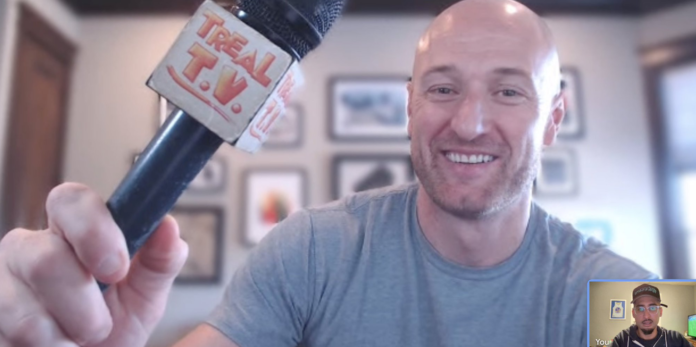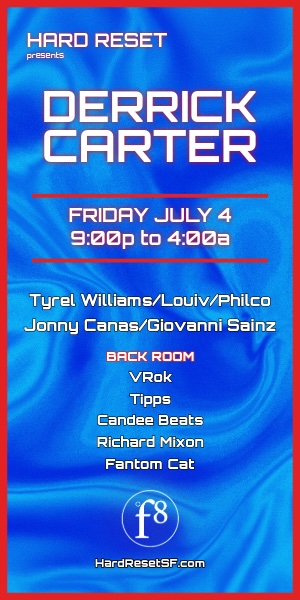The role of the videographer has arguably never been more important in our society. Having someone with the equipment, vision, and skills to document our lives and transmit that to a larger audience is an invaluable part of any artist’s or creator’s ability to convey their message—and lifestyle brand.
But back in the late ’90s and early ’00s, you really needed to be about that life. You couldn’t just hit “record” on your camera phone to livestream. You had to really be outside in the mix, on stage with the culture makers, or getting raw footage during after-hour sessions when everyone else went home for the night. Luckily for us, we had plenty of those people here in the Bay Area—the preservers of our histories, legacies, and movements.
From photographers to journalists and filmmakers, a plethora of folks were involved in recording and transcribing what was happening in the culture back then and sharing it with the rest of us. People like Justin Lomax, who started out as a Circuit City employee in the East Bay and ended up becoming Mac Dre’s personal videographer and creative partner for timeless collaborations like “Treal T.V.,” a holy bible of Bay Area living before the internet existed.
Though he’s currently working on public service art and political action projects like Defender and 1-800 Happy Birthday as the managing director at Even/Odd Studio in San Francisco, Lomax’s journey started out by a chance encounter with Vallejo rappers, Mac Dre, and J Diggs. Here’s what he had to say about his early years in Bay Area video.
48HILLS How did you first get started as a videographer?
LOMAX I made skate videos on VHS and handed them out as a freshman kid in high school. Once, I went down to San Diego on a road trip and stayed at a random guy’s house who my friend knew, and that guy had one of my VHS tapes (laughs.) How does that happen? When you speak to a certain subculture, it’ll get passed around, even before the internet existed.
48HILLS When did you get involved in documenting Bay Area rap and street culture with iconic figures from this region?
LOMAX I was selling computers at Circuit City in Concord and my boy Brian Lovely, aka B Love, was in the same department. We formed a close friendship and I showed him one of my skate videos. He said it was dope and invited me to a Mac Dre concert and told me to bring my camera. I went to a Vallejo apartment complex and his friend, who was J Diggs (which I didn’t know at the time), just got out of the pen. He had robbed some banks. I didn’t know who he was. I got into a tiny car with them and two other guys. They were surprised to see me. [laughs] B Love told them I was filming it all and they were like, cool. They started hotboxing immediately. Three hours into the drive, I asked where the concert was. They told me it was in Portland, the next night (laughs.) I just turned 21 and I was like, fuck it—but I had no idea. It turned into a road trip to Portland, and I just remember drinking all day and next and almost blacking out. I was on stage for that first show. Nickatina opened up. I was on the side of the stage with Dre. I remember Nickatina came over and just smacked my camera hella hard, because he didn’t know who I was. No one did. Looking back at it, that was fair. They probably thought I was the police. [laughs] But over time I won them over. After that, I started filming with Dre almost every weekend, and I eventually collabed with Nickatina, too.
Help us save local journalism!
Every tax-deductible donation helps us grow to cover the issues that mean the most to our community. Become a 48 Hills Hero and support the only daily progressive news source in the Bay Area.
48HILLS How did it all take off from there? “Treal T.V.” was huge back then.
LOMAX We had that first concert. I came back with the tapes and went to Dre’s house in Sacramento next week and showed him raw footage. He told me he wanted to make a DVD movie. He pulled up his laptop—he was teaching himself how to use Pro Tools and Adobe—and he showed me something that was chill that he was working on. I knew I could do it differently. I wanted to handle the camera work and editing, so I cut some stuff with simple titles and proper audio to show him. I gave him an edit of a later concert he did. That was one night of footage, so I asked him to give me a few more months. It took us over a year for the first “Treal T.V.” But he knew it was better than he could do and saw potential there. I just kicked it wit’ him and his circle for over a year, just quietly working on it. I had to export a cut to DVD and VHS to show Dre in Sacramento each time. There was no sharing a link to review an edit. [laughs] I had to cut, export, bring it over, show him on a laptop. That workflow was crazy, looking back. We still needed a host, and I was at DVC in Pleasant Hill at the time, so I convinced the teacher to let me use the studio on a Saturday to shoot our segment. It was absolutely awful. I was 21, 22, making it all up. I told Dre we got hooked up with the studio space, and I asked him to show up on time, since we only had two hours. To his credit, he showed up on time, which I’ve never seen him do, and he freestyled it. I just gave him prompts and he just did it on the spot. It was amazing.
48HILLS How would you describe “Treal T.V.” to someone today who has never seen it?
LOMAX The initial idea was just a true and real TV show: part documentary, but heavily inspired by an actual show, Real TV. It was home video clips of crazy shit in the ’90s. It was the format that worked for us. We could capture random stuff and put themes to it, and add songs and make a variety show of Dre’s concerts and performances. It was inspired by those home video shows of the ’90s, but also the music DVD documentaries that were big back then. It didn’t aspire to be an in-depth commentary on any aspect of hip-hop. It was about showing how much fun Dre was having in his life, with some edgy shit that would happen, too. A lifestyle documentary.
48HILLS What was it like to be involved in so many iconic Bay Area projects, including “Treal T.V.” and The Block Report?
LOMAX I had been a fan of Mac Dre for years but I didn’t realize how big the effect [of documenting his life] would be. The immediate recognition of “Treal T.V.” was wild for me to see how it spread everywhere. People would swarm around the mic with that logo. It created something special within the Bay. It was really rewarding to see others connecting to it like that. Brian Lovely, aka B Love, made the intro to Dre and was later a co-producer on it. He’s close as a collaborator. It was an interesting time. You needed a DVD player, or you had to be at someone’s house to see it. It’s weird to me because “Treal T.V.,” I equate it to how people watch skate videos over and over to get hyped. For people who were gonna go out to party, they would just put it on in the background. It was part of the fabric of your life in the Bay.
48 HILLS Mac Dre references you in his song “Willingly.” You clearly played a role in his creative life. What defined him to you as a person, artist, and collaborator?
LOMAX He was every bit the character that we showed on film. There was no performance. Camera on or not, that’s the way he was. It made my job easy. I just had to hit record. Especially when the mic was in his hand, he could turn it up, but just in the studio sessions, I’d film for a few hours and then hang out and he was still the same person. He had an incredible energy and creativity. He rapped about a lot of stuff, but he’s an incredibly introspective guy in my experience. Talking to him about our project and his ideas, veering off into other subjects, he was a much deeper guy than some people might assume about a rapper talking about drugs and pimping hoes.
For “Treal T.V. 2,” we changed some editorial things to represent him differently and it makes me want to go back and see what I could still add after losing him. Throughout his life, he spent a lot of time in prison, so he had time to think about stuff. It made him reflect quite a bit. I enjoyed that side of him. It makes me see other artists I don’t personally know and think about how their [public] persona is just the surface.
48 HILLS Looking back on it all, what stands out to you about the experiences you witnessed and the people you had the privilege to be around back then?
LOMAX One of my favorite parts about the experience is all the people I saw behind the scenes, before we even called it Hyphy. Back in 2000, 2001, 2002. We were just running around recording rap shows. The Hyphy name took hold after Dre died and then it blew up and had its moment. A lot of people around Dre were trying to film back then; there was no lack of people with cameras, and he welcomed it. But nobody else figured out how to package it up in a way that sort of made sense. I look back and feel embarrassed by my creative choices. [laughs] But maybe why Dre gravitated towards me is because I showed him what I could do, and he was like, “oh shit, you’re actually thinking about this.” You couldn’t just post on YouTube back then. I was with those guys for months and I won Dre over. I was a white kid from Concord with a camera in hand. They probably thought I was the police at first (laughs).
After the first project though, everything fucking changed. I knew how to actually put it together to create a platform for them to be a part of. I was welcomed everywhere after that. Along the way, I met all of the people behind the scenes that no one had really heard of. Producers. Or dudes like Stretch, who was Dre’s manager. He was quietly there, never on stage. There was a collection of folks like him with every camp in the Bay Area. And the photographers, like D Ray. There was a clique of folks: videographers, photos, managers. It’s nice to see them all getting recognized now. Time gives you the luxury for introspection and reflection on stories that weren’t told. So much stuff in the 2000s and prior to that was surface level. But now we’re hearing about it from everyone who was involved.
48HILLS What’s a random Mac Dre story that others probably don’t know?
LOMAX The first night I met Dre, he told me we had the same Sony P150 professional camera. I didn’t believe him, because it was a camera used for professional filming, it’s not just a handheld home camera. But he showed me at his house and I was like what the fuck. [laughs] He stole it from “The Ricki Lake Show” when he came on as a guest once and didn’t like the questions they were asking. He just took it while he was leaving the studio and no one was looking (laughs).






